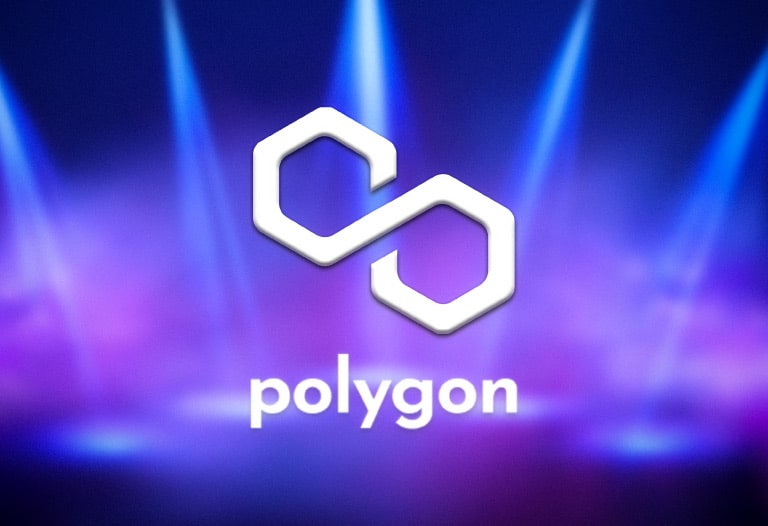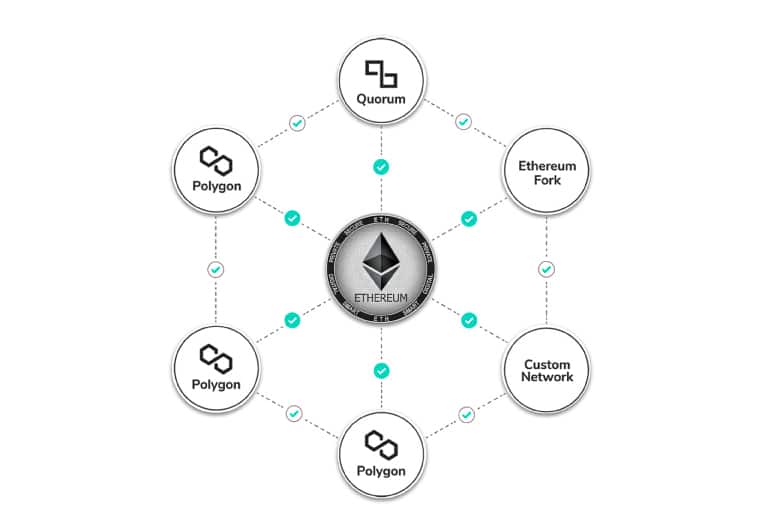
Table of Contents
ToggleEthereum is a project that has distinguished itself as one of the giants of the crypto universe, along with Bitcoin. However, it has a very notable problem and that is its scalability.
Despite its high recognition, it has failed to adapt and respond adequately to the demand for its blockchain, which has led to worrying rises in GAS prices.
Part of the current solution to this problem has come from one of its major allies: Polygon.
Want to know what Polygon has to offer Ethereum right now when it needs it most?
You’re in the right place, because we’ll take a quick but interesting tour of Polygon, Ethereum’s loyal ally.
What is Polygon?
Polygon is a protocol and framework, which aims to solve Ethereum’s scalability issues and build and connect Ethereum compatible blockchain networks.
Certainly, despite the fact that the Ethereum network is in high demand in different platforms and decentralized financial (DeFi) type applications such as Uniswap, it can only process 15 transactions per second.
This causes the average transaction price of Ethereum to hover around $20, reaching $150 in times of high demand.
To this end, using open source technology and smart contracts with the Ethereum network, Polygon implements an independent network or “sidechain” that offers second-layer scaling.
This layer is secured by the Plasma framework and a proof of stake (PoS) consensus protocol.
Let’s take a brief look at how this project came about.

Origin of Polygon
The project was launched in October 2017 under the name of by a team consisting of Jaynti Kanani, Sandeep Nailwal and Anurag Arjun, who previously contributed to projects associated with Ethereum.
An example of this was the first version of Plasma by Vitalik Buterin and Joseph Poon.
In 2019, they moved to their own network under the name Matick Network, which was changed to Polygon in February 2021.
Recently, in April 2021, AAVE launched a cryptocurrency lending protocol there, which triggered a huge demand that boosted Polygon’s price to new all time highs.
I understand, but how does Polygon work? Let’s talk about its structure and architecture
Polygon Platform Structure
Unlike the proof of work consensus protocol, Polygon uses the proof of stake (PoS) mechanism that Ethereum 2.0 plans to employ.
In addition to the consensus mechanism, Polygon uses an architecture popularized by Cosmos, called Heimdall.
Unlike traditional Proof of Stake blockchains, Heimdall randomly chooses the miners who are to be the block producers from among the validators who are present at the network’s proof of stake.
Certainly, this dual consensus architecture allows decentralization with high transaction throughput, resulting in network scalability. On a single sidechain, it has been seen to achieve 7000 transactions per second (TPS).
But how does it achieve this? Let’s take a closer look.
The architecture of the Polygon network: The four layers
Polygon provides Ethereum with second layer scalars, which it achieves through sidechains, but to achieve this, the Polygon network has its own architecture composed of four layers:
- At the Reuther layer, Polygon chains (a set of Ethereum smart contracts that manage the finality, staking, dispute resolution and message transmission of transactions) can use the Ethereum blockchain to host and execute critical components.
- Followed by that, there is the security layer, where validators verify the validity of Polygon chains. They can implement it directly in Ethereum and benefit from the activity of Ethereum miners.
- Finally, the third and fourth layers are sovereign blockchains, which can be designed by developers through Polygon’s software development (Polygon SDK).
In these layers, we can find two types of chains:
Secured chains
It is a type of blockchain where developers or miners start from pre established tools that, as the name suggests, have been used before and are protected.
Therefore, there is no group of validators in these chains and there is a high level of security. The only thing is that they are less flexible and independent.
Independent chains
They are completely independent blockchains and can connect and exchange messages with other blockchains in Polygon.
Your developers are in charge of security and, for this reason, you must establish a group of validators.
Control points
Polygon validators periodically perform checkpoints on the Ethereum main chain to resolve any disputes that occur in a sidechain transaction.
To do so, they execute proofs of participation (PoS) on these disagreements. This type of technology allows up to 65 thousand transactions per block.

What about the MATIC token?
MATIC is Polygon’s native token, of type ERC-20, which is issued by the Polygon network using the Proof of Stake consensus protocol. It is used to incentivize validators for their work and to pay fees for each transaction.
It currently has a total supply of 10 billion tokens, of which 5 billion MATIC tokens are in circulation. However, they will reach their limit in December 2022.
So, what are its advantages?
We can define them in three:
- It has an intuitive interface, plus a software development kit with Wallet Connect support, which enhances your user experience and application management on mobile devices.
- It uses PoS, one of today’s most recognized and secure consensus mechanisms.
- It has great scalability, which makes it more secure and less costly in its transactions.
Glad to see you back at the end of the article! Did you like the topics we talked about today?
You can find out much more through our social networks like Facebook, Instagram, Twitter or Youtube, where we upload short reviews that last no more than a minute.
We also have our blog, our most valuable source of information and where we will tell you everything in detail about the information you need.
But, oh wait, I notice that you are a special Bitnauta, since you want to venture into this crypto universe.
Go to our official website, where we have a lot of options for you to make the best investments at incredible prices.
We look forward to seeing you at Bitnovo see you soon!




